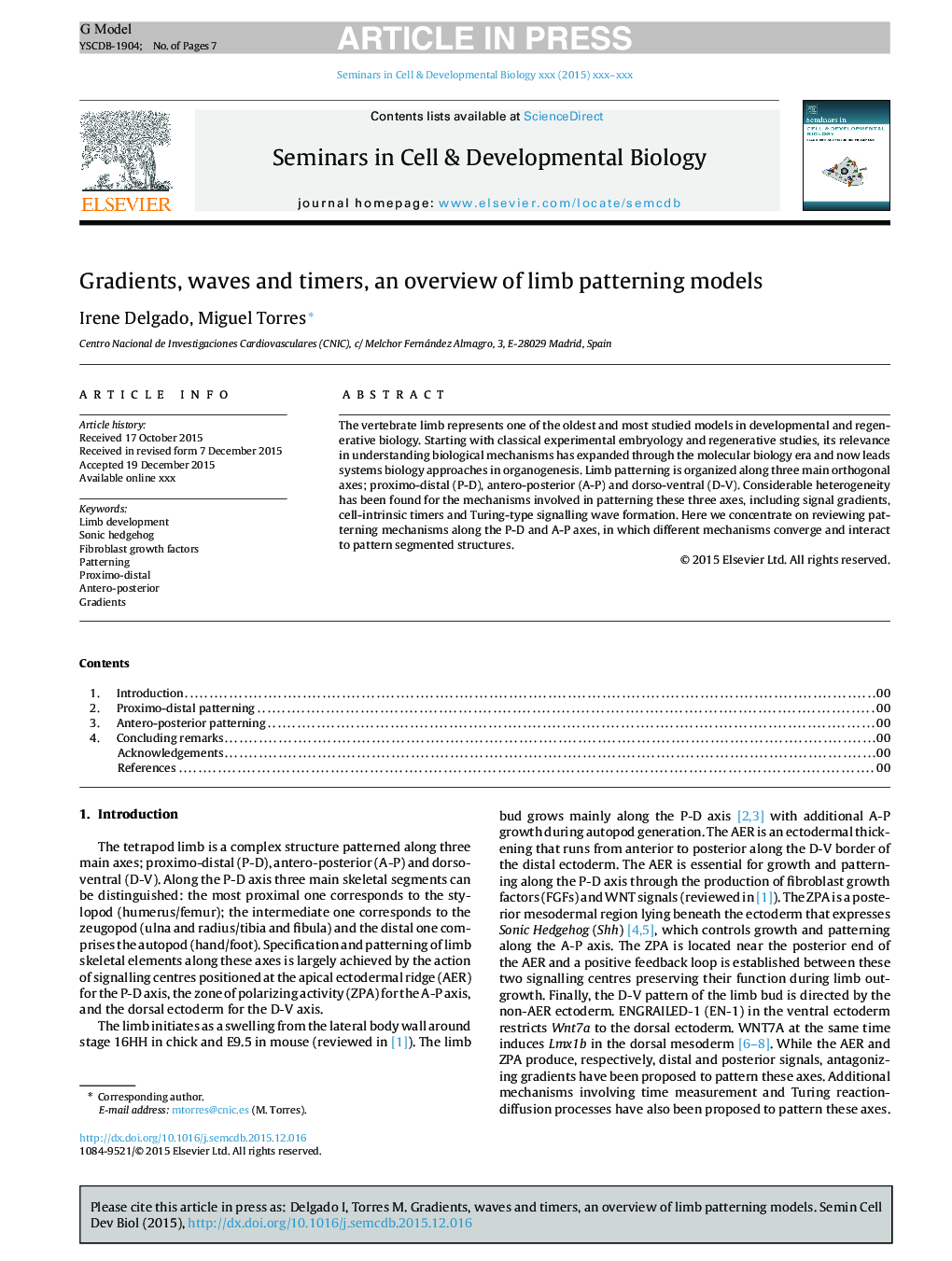| Article ID | Journal | Published Year | Pages | File Type |
|---|---|---|---|---|
| 8480243 | Seminars in Cell & Developmental Biology | 2016 | 7 Pages |
Abstract
The vertebrate limb represents one of the oldest and most studied models in developmental and regenerative biology. Starting with classical experimental embryology and regenerative studies, its relevance in understanding biological mechanisms has expanded through the molecular biology era and now leads systems biology approaches in organogenesis. Limb patterning is organized along three main orthogonal axes; proximo-distal (P-D), antero-posterior (A-P) and dorso-ventral (D-V). Considerable heterogeneity has been found for the mechanisms involved in patterning these three axes, including signal gradients, cell-intrinsic timers and Turing-type signalling wave formation. Here we concentrate on reviewing patterning mechanisms along the P-D and A-P axes, in which different mechanisms converge and interact to pattern segmented structures.
Related Topics
Life Sciences
Biochemistry, Genetics and Molecular Biology
Cell Biology
Authors
Irene Delgado, Miguel Torres,
